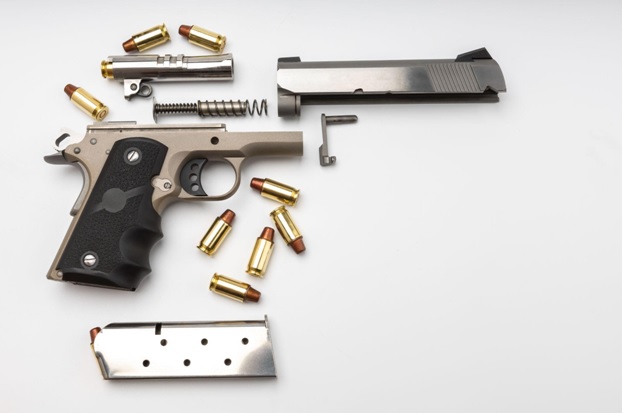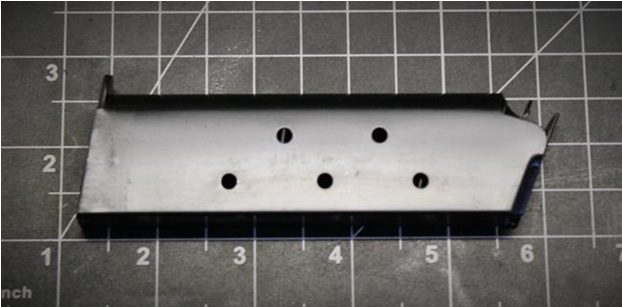Keeping Your 1911 Magazines in Shooting Shape
Jan 23rd 2023
The weakest point in the operation of any semi-automatic platform is, without a doubt, the magazine. Magazine springs fatigue, feed lips wear, and followers break. As much of a hassle as gas and recoil systems can be (and as much cleaning as they require), it’s more often the magazine that causes hiccups with feeding and cycling.
So, with that said, let’s just address the countless 1911 owners in the country. As one of the world’s most popular handguns (and an old one, too) no doubt there are some of you out there with 1911 pistols (and 1911 mags) that are older than you are.
Not to worry. This is a bombproof platform and features one of the most reliable actions ever produced.
But about the 1911 mags? Well, here are some things you can do to ensure your magazines are in shooting shape and stay that way for years to come.
Keep Your 1911 Mags Clean
Far and away, the most important thing you can do for your 1911 mags, in terms of maintenance, is to keep them clean.
It’s the oil, fouling, dirt, dust, and other abrasive detritus that gets into a mag that can wear it out and accelerate corrosion on the mag spring and take it out of commission. Excess fouling inside the mag body can also make it gritty and cause inconsistent feeding.
So, you need to take it apart and keep it clean.
If your 1911 has a fixed base plate, what you’ll need to do is use a plunger or screwdriver to compress the spring; then, insert another screwdriver through one of the slots in the mag body to detain the spring, underneath the follower.
With the spring detained, turn the mag upside down and tap it on a table to release the follower. Remove the follower, then press the magazine, opening-down, on the table. Remove the screwdriver detaining the mag spring, carefully, as it will want to shoot out.
Carefully remove the magazine from the table and remove the spring.
At this point, get yourself some cleaner - Hoppe’s No. 9 works well - and, with a rag, use it to clean the follower and the inside and outside of the mag body. A brass brush can also help you loosen any stubborn fouling deposits.
Now turn your attention to the mag spring. Carefully clean the entire mag spring to remove any oil, dirt, or fouling, using your cleaner or solvent as necessary. Then, fully dry all three magazine components and coat very lightly with oil, such as Rem Oil.
The keyword here is lightly, as excess oil will actually trap dirt and fouling and can accelerate abrasive damage.
Once your magazine’s spring, follower, and body have been thoroughly cleaned and treated with a light coat of oil to protect against corrosion, reassemble them in reverse order.
How often do you need to clean your 1911 mags, though? A good rule of thumb is as often as you clean your gun. If you do it after every trip to the range, that will keep your gun and mags on the same maintenance schedule.
Of course, this is not entirely necessary. Clean your mags as often as they need it, or whenever you can start to see fouling accumulating on the mag body or the inside of the mag under the feed lips.

Cycle Them
The general consensus is that storing magazines loaded actually doesn’t ruin them. It’s the continuous use of compression and decompression that wears out the mag spring.
So, if it’s not storing magazines loaded, what is it that wears them out? Shooting through them, ad infinitum.
Let’s get one thing straight. If you do a lot of high-volume shooting, and you only have one or two 1911 mags, guess what; they’re not going to last. Eventually, you will need to replace the mag spring.
But there is something else you can do to ensure that each individual 1911 magazine lasts for longer: it’s called sharing the love.
When you go to the range, don’t just take the one mag your gun came with. Buy a few spares (see below) and stuff them in your range bag. Having just 3 to 5 spare 1911 magazines (and shooting through them evenly) can substantially reduce the amount of wear and tear on each individual mag. It’ll be more cleaning, but your magazines will last longer, too.
Nonetheless, there are some who store their guns with the hammer dropped on a dummy round and the mag empty. That certainly can’t hurt, either.
Keep Some Spare 1911 Mag Springs Around
One more tip we have for you 1911 shooters. Keep some spare 1911 mag springs in your bench. These are relatively cheap, and the first part to fail. If there’s a problem with your mag, you can bet it’s almost definitely going to be the spring, so just having some spares around can save you a lot of trouble.
Need a Superior 1911 Mag Upgrade?

Earlier in this post where we suggested you get a few 1911 mags and keep them in your range bag as spares so you could spread the love instead of just shooting through one - we can help with that.
Our 1911 mag is a cut above the rest. Check it out at the previous link.
It is produced on a high-speed link press and the design incorporates 6 stages of body tooling and 16 stages of follower tooling that create fewer radical bends and less metal stress. All welding is done via a computer-controlled robotic-arm argon arc welder; you can’t even see the seam on the back.
The magazine has parallel feed lips (perfect for wadcutters), a rounded follower, and a high-strength spring tested to 20,000 cycles. The magazine is processed in a hot chemical bath that converts the surface to abrasion, corrosion-resistant magnetite, and the tube is nitride-carburized, resulting in a highly flexible, ductile, corrosion, scuff, and abrasion-resistant finish.
But you won’t believe the next part. We’re selling these 1911 mags - our best of the best - for less than $7 each. You can add 5 to your range bag for under $40.
No need to thank us.

